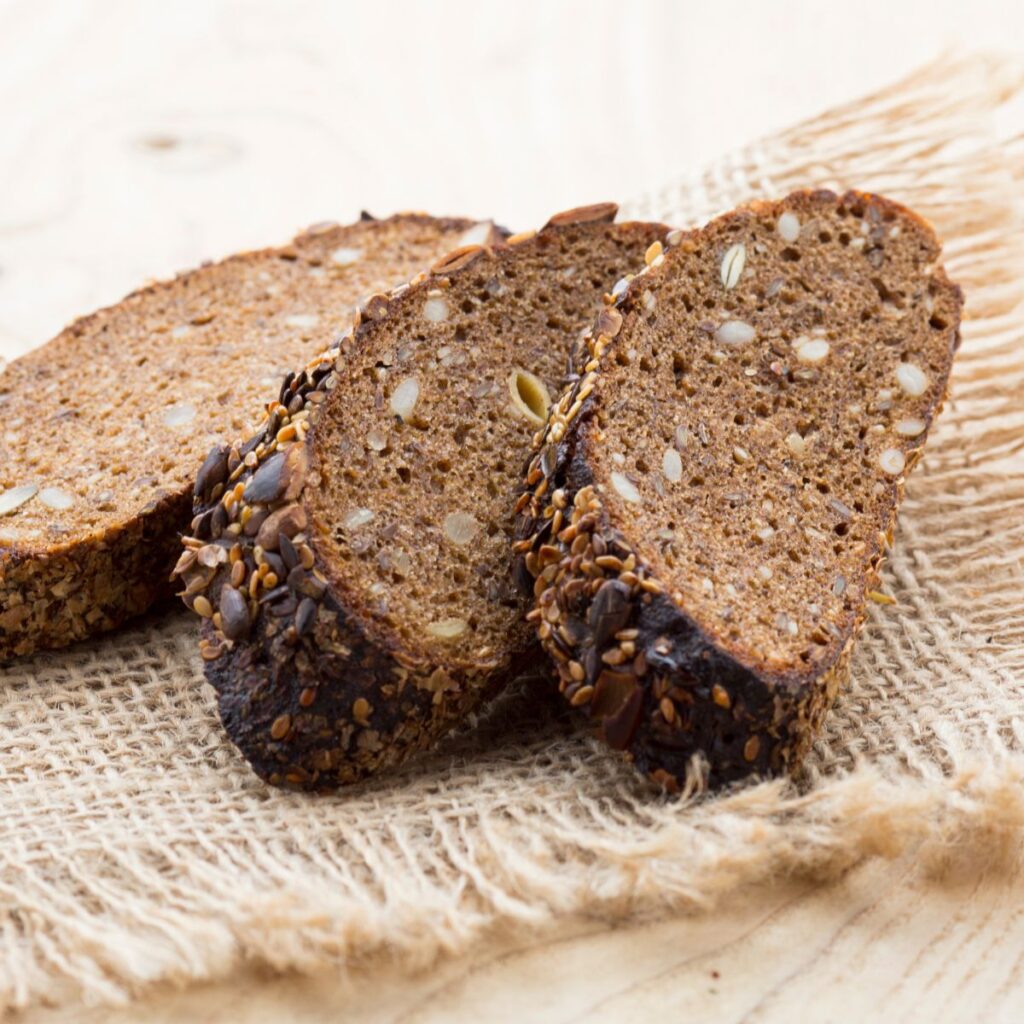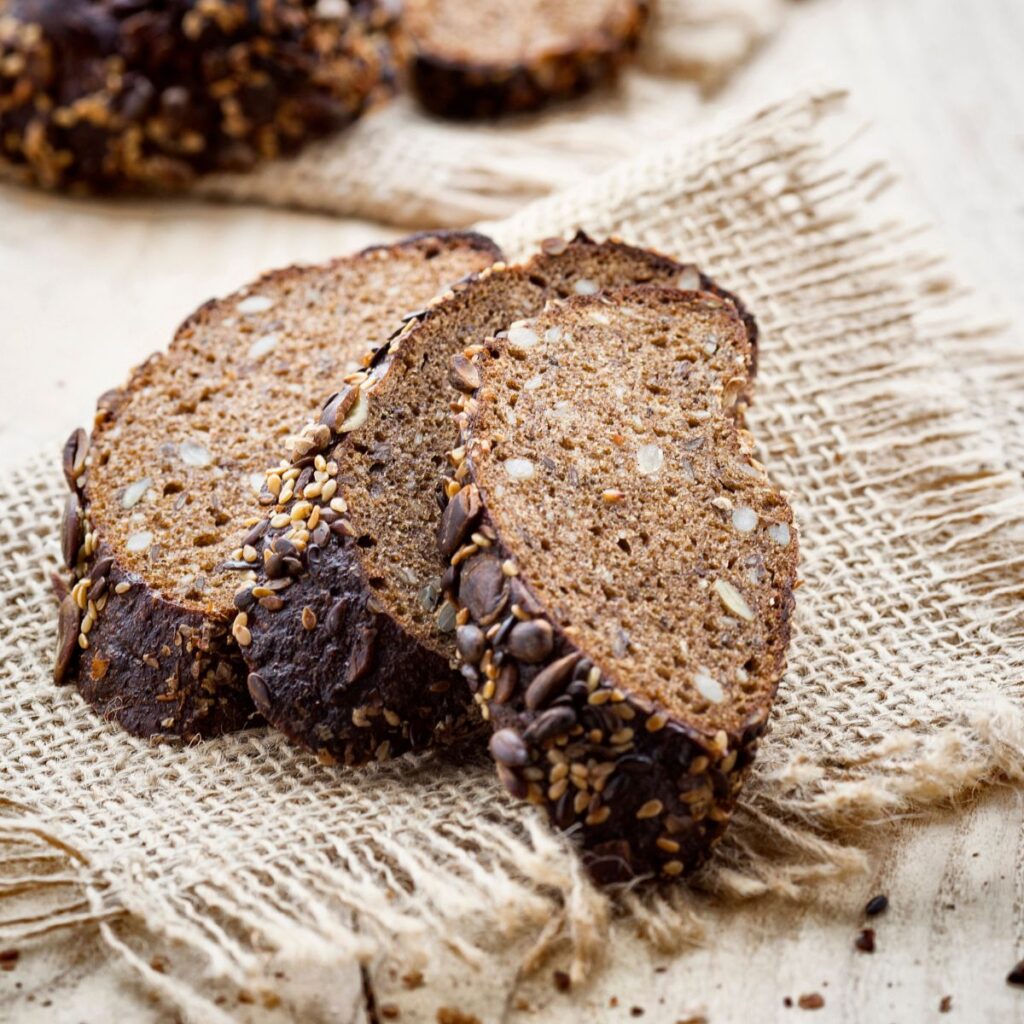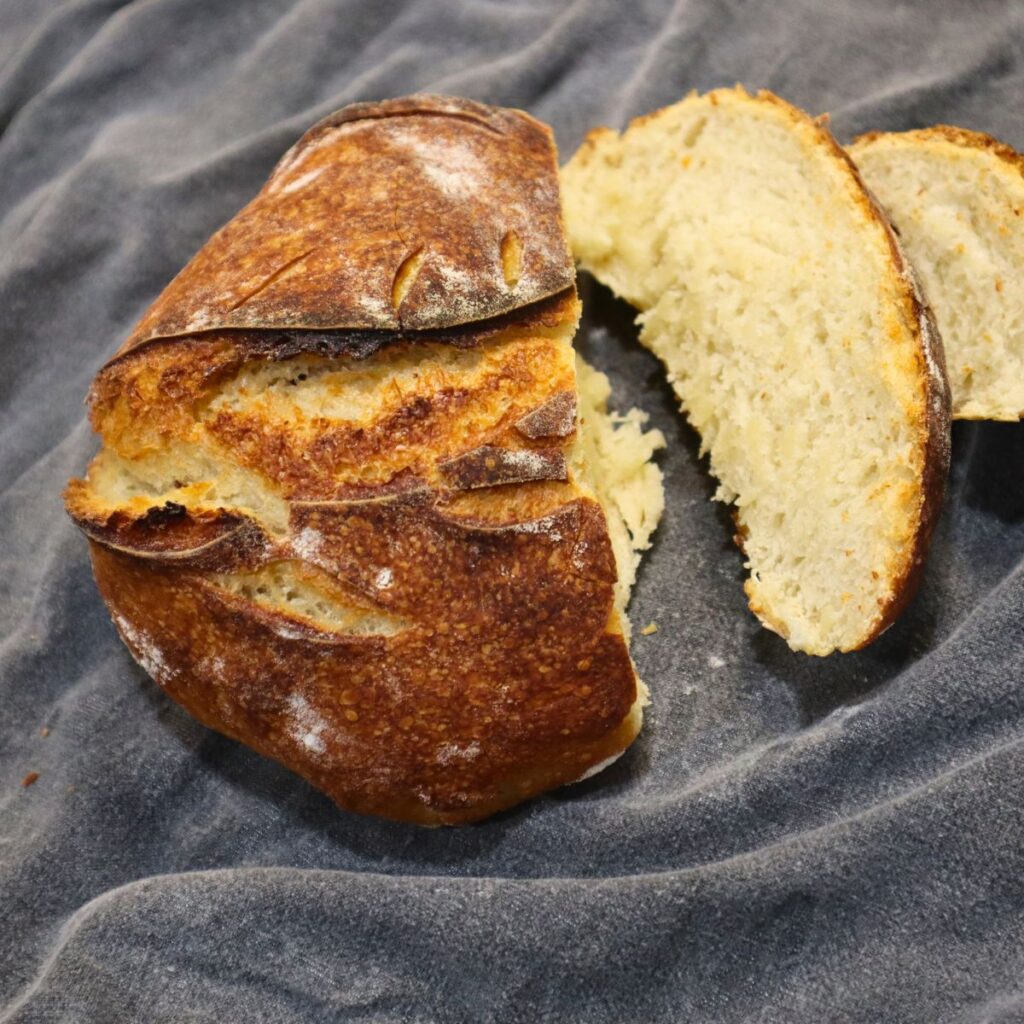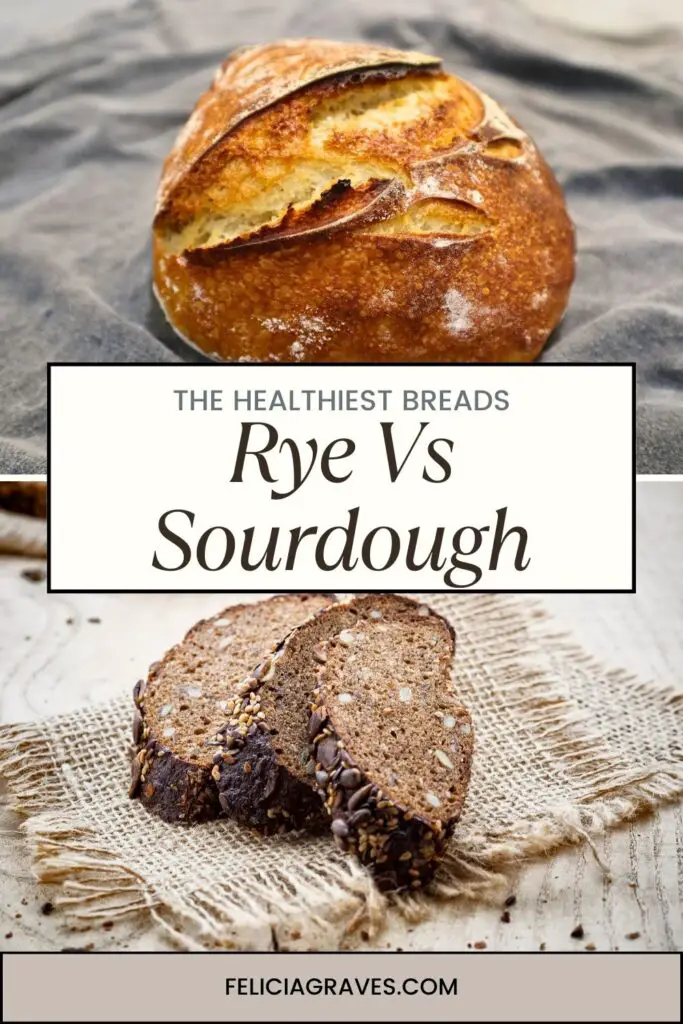When it comes to types of bread, the market offers a plethora of options, each with its own unique qualities and flavors. Two popular choices that often stand out are sourdough bread and rye bread. Both varieties boast a reputation for their distinctive taste and potential health benefits. In this article, we’ll dive deep into the characteristics of these breads, examine their ingredients and fermentation processes, and explore their impact on our well-being. So, grab a slice of bread and let’s get started!

Understanding Rye Bread
Rye bread is celebrated for its robust and earthy flavor, owing to the inclusion of rye flour—a type of grain that adds complexity to the loaf. While traditional rye bread is often made with dark rye flour, lighter versions can also be found. One of the defining features of rye bread is its lower gluten content compared to white bread, making it a good choice for those with gluten sensitivity or celiac disease.
The unique composition of rye flour, rich in soluble fiber and whole grain goodness, provides notable health benefits. Consuming rye bread as part of a balanced diet may help regulate blood sugar levels, improve digestive health, and support cardiovascular well-being. The high fiber content promotes a healthy digestive tract and contributes to feelings of satiety, aiding in weight management.
Crafting Sourdough Bread
Sourdough bread, on the other hand, showcases a distinct tangy flavor resulting from its fermentation process. The magic begins with an active sourdough starter, a mixture of flour and water inhabited by natural yeasts and lactic acid bacteria. This starter replaces commercial yeast and kick-starts the fermentation that imparts complex flavors and textures to the bread.
During the slow fermentation process, the bacteria in the sourdough starter produce lactic acid, which helps break down phytic acid present in the grains. This breakdown makes the bread more easily digestible and allows for better absorption of essential nutrients. Sourdough fermentation also contributes to a lower glycemic index, making it a favorable choice for those seeking to manage blood sugar levels.
Sourdough Resources:
Maintaining A Sourdough Starter With All-Purpose Flour
How To Bake Sourdough Bread Without A Dutch Oven

Rye Bread vs. Sourdough Bread: What Sets Them Apart?
- Ingredients and Flours: Rye bread predominantly incorporates rye flour, which includes the whole grain and provides an array of nutrients. Sourdough bread, however, can be crafted using various types of flour, such as whole wheat flour, white flour, or a combination of both. Each flour adds its own nuance to the final product.
- Fermentation Processes: Rye bread can be leavened with commercial yeast or a rye sourdough starter for sourdough rye bread, depending on the desired result. Sourdough bread exclusively relies on the wild yeasts and bacteria in the sourdough starter, resulting in its characteristic tangy taste and airy texture.
- Health Benefits: Both rye bread and sourdough bread offer health advantages. Rye bread’s high fiber content and whole grain properties contribute to improved digestive health and blood sugar regulation. Sourdough bread’s long fermentation process breaks down phytic acid, making it more easily digestible and potentially beneficial for individuals with irritable bowel syndrome.
Choosing the Right Bread for You
Selecting the right bread ultimately depends on your personal preferences, dietary needs, and health goals. Whole grain bread, whether it’s rye or sourdough, is generally a good option due to its high nutritional value. The slow-fermented nature of sourdough bread provides additional benefits, such as increased amino acid availability and potentially easier digestion for some individuals.
When purchasing bread, whether from a local bakery or the grocery store, try to opt for whole grain versions that utilize quality ingredients and minimal additives. If you have the time and inclination, baking your own bread allows you to have full control over the ingredients and fermentation process. Additionally, exploring different types of flour, such as sprouted rye flour or whole wheat flour, can add diversity to your bread-making adventures.

Incorporating Rye and Sourdough into Your Daily Life
Now that we’ve explored the differences between rye bread and sourdough bread, you may be wondering how to incorporate these delectable loaves into your daily routine. A simple approach is to swap out regular bread with rye or sourdough bread for your sandwiches or toast. Experiment with various toppings and spreads to enhance the flavors and nutritional value further.

Rye Bread Vs Sourdough Bread
When it comes to rye bread vs. sourdough bread, both offer distinct qualities that can be part of a healthy diet. Rye bread brings the goodness of whole grains, less gluten, and a unique flavor profile to the table. Sourdough bread, with its long fermentation process and complex flavors, presents an enticing option that might benefit individuals with specific dietary requirements or digestive sensitivities. Both options are some of the healthiest breads available for you.
Ultimately, the best bread for you depends on your preferences and how it aligns with your health goals. Remember to choose high-quality ingredients, opt for whole grain variations, and enjoy the process of exploring the wonderful world of bread. So whether you reach for a slice of hearty rye bread or savor the tangy notes of a well-crafted sourdough loaf, embrace the joy of nourishing yourself with wholesome bread that suits your taste and lifestyle.


Leave a Reply